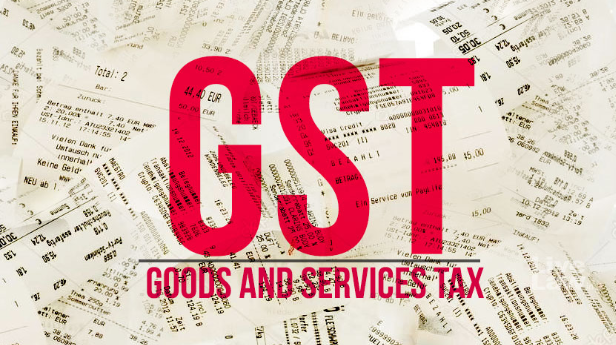Cement is one of the most critical commodities in the construction and infrastructure sector. It forms the backbone of buildings, roads, bridges, housing projects, and industrial infrastructures. Given its importance, understanding how taxes like the Goods and Services Tax (GST) affect the cement industry is essential for manufacturers, distributors, builders, and consumers alike. In this article, we will explore the cement GST rate, explain its impact on the industry, and delve into why GST registration matters for businesses dealing with cement.
What Is GST and Why Was It Introduced?
The Goods and Services Tax (GST) is a unified, indirect tax system implemented in India on July 1, 2017. It was introduced to consolidate multiple existing taxes, such as excise duty, VAT, sales tax, service tax, and others, into a single, standardized taxation system. GST simplifies taxation while ensuring transparency in all transactions.
GST operates under four major tax slabs—5%, 12%, 18%, and 28%—which apply to various goods and services. Cement is an essential item taxed under the higher bracket due to its significant role in infrastructure development and its relatively large tax revenue contribution to the government.
What Is the GST Rate for Cement?
The GST rate for cement is set at 28%. This places cement in the highest tax bracket under the GST system. It’s essential to note that this rate applies to both ordinary Portland cement and specialized cement like white cement, colored cement, or quick-setting cement.
Why Is Cement in the 28% Tax Bracket?
The rationale behind the higher GST rate for cement stems from its classification as a non-essential but highly revenue-generating item. Cement is a bulk commodity primarily used for infrastructure development, and governments use taxation to regulate its price and limit excessive usage in non-construction sectors. Additionally, revenue from cement contributes significantly to funding government infrastructure projects.
However, the 28% GST rate has raised concerns among stakeholders in the construction industry since it makes cement relatively expensive. The increased cost of production and procurement could lead to higher prices for end-users, including real estate developers and individual buyers, thereby influencing the overall cost of housing and infrastructure development.
What Is GST Registration, and Why Is It Essential in the Cement Industry?
Definition of GST Registration
GST registration is the process by which a business becomes a registered taxpayer under the Goods and Services Tax system. Once registered, a business receives a unique GST Identification Number (GSTIN) and is legally required to comply with GST rules, including filing tax returns and maintaining records.
Who Needs GST Registration?
GST registration is mandatory for businesses meeting certain criteria concerning annual turnover:
- For businesses supplying goods, GST registration is required if the annual turnover exceeds ₹40 lakhs (₹20 lakhs for those in special category states).
- For service providers, GST registration is obligatory if annual turnover surpasses ₹20 lakhs (₹10 lakhs for special category states).
Additionally, businesses involved in interstate supply or e-commerce are required to register for GST regardless of turnover.
Why Does GST Registration Matter in the Cement Industry?
1. Regulatory Compliance
For businesses involved in the manufacturing, sale, or distribution of cement, GST registration ensures compliance with the country’s tax regulations. Without registration, a business cannot legally operate or claim tax credits on input costs.
2. Input Tax Credit (ITC)
One major advantage of GST registration is the ability to claim Input Tax Credit (ITC). ITC allows businesses to set off the tax paid on inputs (raw materials or services) against the GST liability on the final product. Cement production involves multiple components like limestone, clay, and gypsum, which are taxed at various rates under GST. Registered businesses can claim ITC, thus reducing the overall cost of production.
For example, a cement manufacturer purchasing machinery or raw materials can claim ITC on the GST paid for these inputs, thereby lowering their tax burden.
3. Transparency in Transactions
GST registration promotes transparency across the supply chain by ensuring proper invoicing and tax declaration. Registered businesses can generate GST-compliant invoices, making transactions legitimate and orderly. This is particularly crucial in the cement industry, where large-scale purchases and bulk orders are common.
4. Competitive Advantage
Businesses with GST registration enjoy a competitive edge over unregistered entities. Builders and contractors prefer dealing with GST-compliant organizations as they can claim ITC and avoid legal complications. Unregistered businesses may lose out on contracts and partnerships with major players in the cement and construction industries.
5. Avoidance of Penalties
Operating without GST registration while falling under mandatory registration criteria can lead to hefty fines and legal actions. Non-registration or non-compliance attracts penalties under GST laws, thus creating unnecessary financial and legal burdens.
GST Rate on Cement and Its Impact on Various Stakeholders
Impact on Manufacturers
Cement manufacturers bear a significant tax burden due to the steep GST rate. While they can claim ITC on raw materials, the overall cost of production may still increase. This has led to calls for a reduction in the cement GST rate to boost domestic production and reduce dependency on imports.
Impact on Distributors and Suppliers
Distributors have to factor in the 28% GST rate when determining prices, which may lead to thinner profit margins. They rely heavily on ITC for cost management but still face challenges competing with sellers who attempt to evade taxes by avoiding GST registration.
Impact on Builders and Contractors
For builders, the high GST rate on cement makes construction projects more expensive. This affects profit margins and often drives up property prices for end-users. Builders frequently advocate for tax rate revisions to make construction more affordable and accessible.
Impact on Consumers
Consumers, including individual home buyers, bear the brunt of higher cement costs due to the 28% GST rate. Affordable housing projects become less economically viable, leading to increased costs for the end-user.
Government Perspective
From the government’s standpoint, the 28% GST rate on cement contributes significantly to tax revenue, funding large-scale infrastructure and development projects. However, policymakers face the challenge of balancing revenue collection with incentivizing the construction sector.
Challenges Associated with the 28% Cement GST Rate
Increased Cost of Housing
Since cement is an essential material for construction, its high GST rate directly impacts project costs. Builders and developers often pass these increased costs on to consumers, making housing less affordable.
Limited Growth in Real Estate
The high GST rate on cement acts as a deterrent against investment in real estate and infrastructure projects. Businesses may opt for imported materials or alternative building techniques to save costs, which can hinder growth in the domestic sector.
Tax Evasion
The steep GST rate on cement has led to instances of tax evasion, where sellers avoid GST registration or underreport transactions. This creates unfair competition and undermines the credibility of the taxation system.
Possible Solutions to Address Concerns
Rate Revision
Many industry experts have suggested revising the GST rate for cement, reducing it from 28% to a lower tax slab like 18%. This would make cement more affordable, encourage infrastructure development, and support the government’s larger goals of housing for all and economic growth.
Robust Compliance Mechanisms
Strengthening GST compliance mechanisms can minimize tax evasion and ensure that registered businesses benefit from ITC. Periodic audits and digital invoicing systems can enhance transparency.
Promoting Awareness About GST Registration
Educating small and medium businesses in the cement industry about the benefits of GST registration and ITC can encourage compliance and boost their overall profitability.
How to Register for GST in the Cement Industry?
Steps for GST Registration
Getting registered under GST is relatively simple and can be completed online by following these steps:
- Visit the GST Portal: Go to the GST official website (www.gst.gov.in) to initiate registration.
- Complete Form GST REG-01: Fill out the application form with required details, including business information and contact details.
- Submit Documentation: Provide necessary documents such as PAN, Aadhaar, proof of business registration, and address proof.
- Verification: The GST authorities verify the submitted application and documents.
- Obtain GSTIN: Once approved, the applicant receives a GST Identification Number.
Documents Required for GST Registration:
- PAN of the applicant
- Aadhaar card
- Business registration certificate
- Address proof
- Bank account details
- Authorized signatory details
Conclusion
The cement GST rate, set at 28%, is significant for the construction industry, contributing to tax revenues but also posing challenges in terms of affordability and growth. On the other hand, GST registration ensures businesses comply with tax laws while benefiting from mechanisms like ITC, transparency, and legal operation.
While the current GST slab for cement remains a point of contention, industry players can mitigate its challenges through proper GST registration and compliance. Advocacy for a rate revision, combined with robust compliance systems, could help create a more balanced taxation framework that supports both government objectives and industry growth.
Understanding the intricacies of the cement GST rate and the importance of GST registration is crucial for manufacturers, builders, distributors, and consumers. By adapting to the current tax regime and exploring opportunities for advocacy and reform, stakeholders can navigate the complexities of GST while contributing to a growing and dynamic economy.
Related Reads
- Custom Fitness App Development: Build the Fitness App Your Users Actually Want
- Manganese Jaws Manufacturer – Akjay International LLC Leading the Industry
- Accelerate Your Career with the Top Data Science and AI Academy: Learn from Experts and Become an AI Expert with Digicrome
- Maximize Revenue Growth with Expert Medical Billing Company
- Color Masterbatch Manufacturers In Ahmedabad: Enhancing Plastics with Vibrancy
- How Inventory Management Solutions Help Prevent Stockouts and Overstocking



